Key takeaways
- A musician’s portfolio serves as a personal narrative, evolving with the artist’s growth and emotional journey.
- Analyzing beats enhances creative insight, emotional connection, and technical skills while revealing the artistry behind successful tracks.
- Drake’s eclectic style, marked by lyrical vulnerability and catchy hooks, allows for deep emotional engagement with listeners.
- Utilizing tools like DAWs and audio analyzers can significantly improve musicians’ understanding and appreciation of music production.
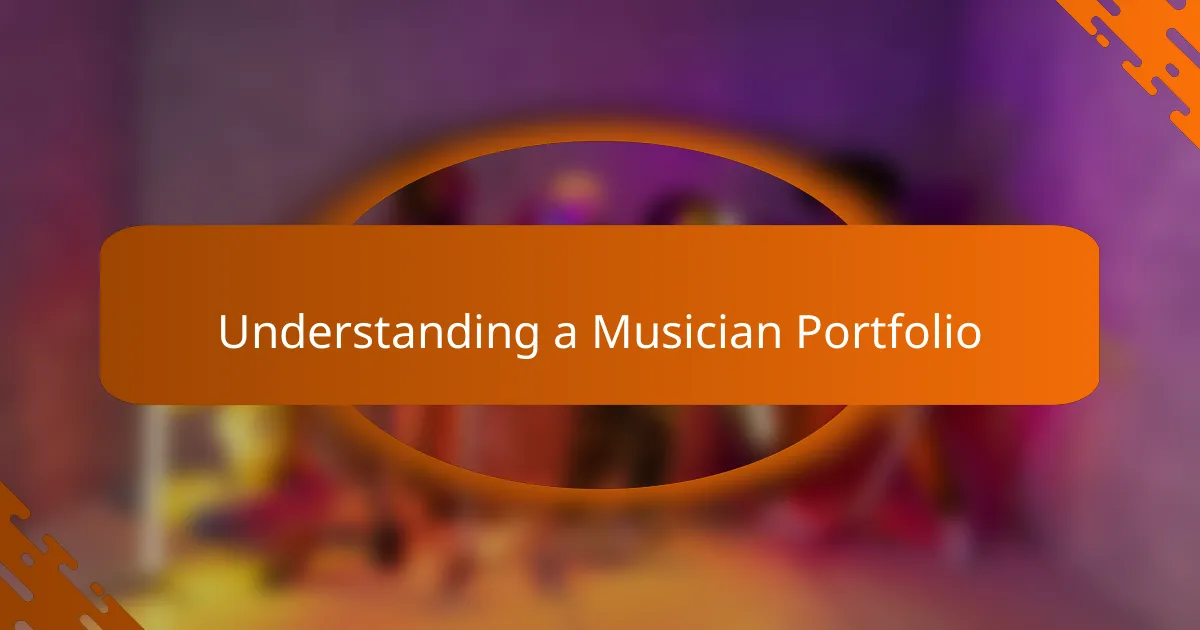
Understanding a musician portfolio
A musician’s portfolio is their sonic resume, showcasing their unique style and skills. It’s fascinating how each track reflects not just technical ability, but also personal journey and emotional depth. When I first put together my portfolio, I remember pouring over every note to ensure it told my story.
Think of it like a canvas that holds various colors and textures—each song might highlight a different influence or mood. I often find myself asking, “What do I want my audience to feel?” This question guided my choices, helping me create a cohesive narrative that resonates with listeners on a deeper level.
It’s also an evolving entity; as artists grow, so do their portfolios. I’ve learned that each update is not just a reflection of my current skills, but also an exploration of where I’m headed musically. Embracing that fluidity has made my work not only more authentic, but also more relatable. Remember, a portfolio is more than just a collection—it’s a bridge connecting you to your audience.
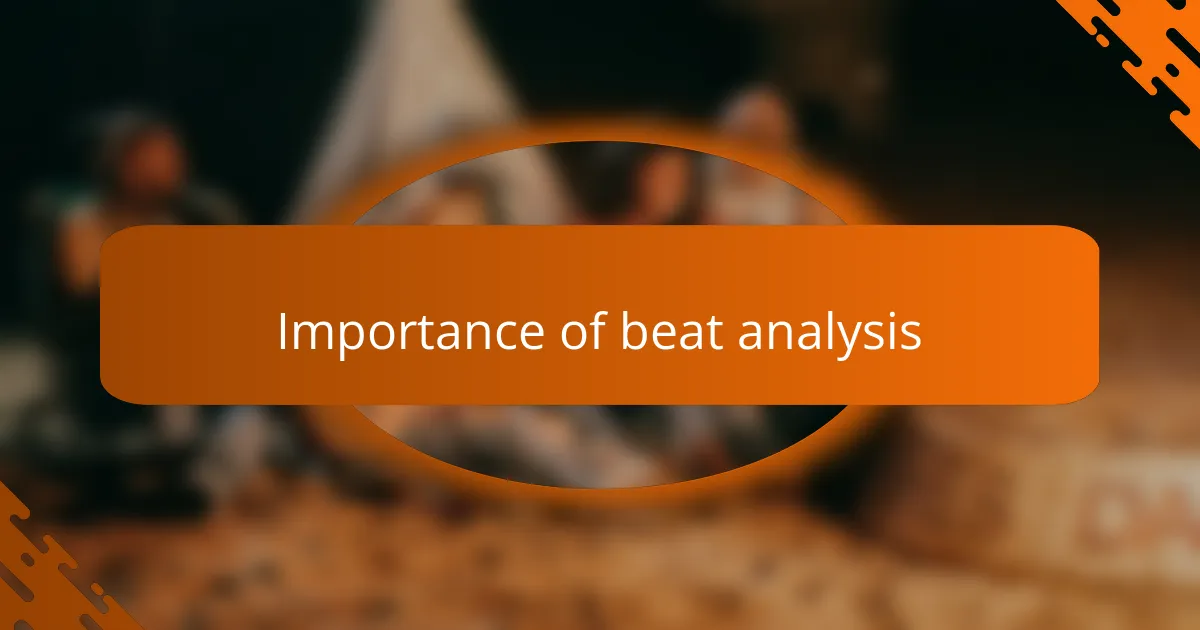
Importance of beat analysis
Analyzing beats, especially those crafted by a music icon like Drake, is crucial for understanding the layers that contribute to a song’s success. From my experience, each beat tells a story and sets the mood, shaping how listeners interpret the lyrics and connect emotionally. When I dive into beat analysis, I feel a deeper appreciation for the artist’s intent and the production techniques that transform an idea into a hit.
The rhythms, samples, and structures in Drake’s beats not only support his lyrics but often enhance their emotional weight. I remember analyzing “God’s Plan” and realizing how the minimalist beat allowed the message to resonate more profoundly with listeners. This kind of insight not only enriches my own musical understanding but also informs my creative process.
| Aspects | Importance |
|---|---|
| Creative Insight | Understanding production choices enhances creativity in my own music. |
| Emotional Connection | Analyzing beats helps me connect with songs on a personal level. |
| Technical Skills | Improves my ability to craft beats by learning from established patterns. |
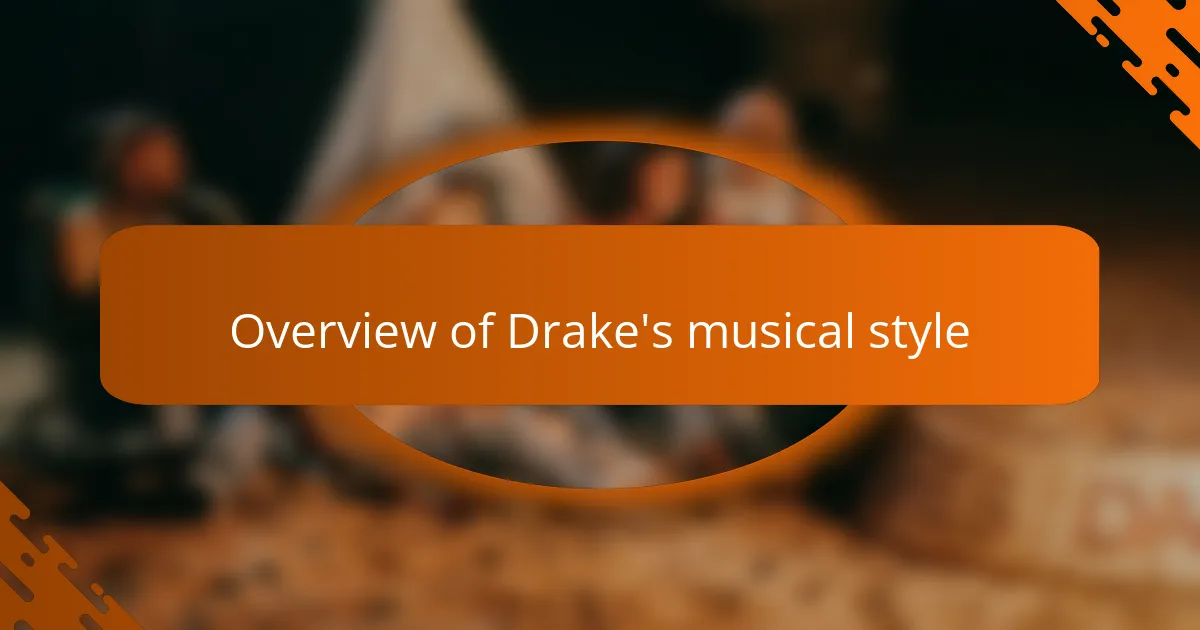
Overview of Drake’s musical style
Drake’s musical style is an eclectic blend of hip-hop, R&B, and pop. This versatility allows him to cater to a wide audience, seamlessly shifting from melodic ballads to hard-hitting beats. Personally, I’ve found that his ability to navigate different genres gives each album a unique flavor, making his discography an engaging journey.
One aspect I admire about Drake is his lyrical vulnerability. He often delves into personal experiences, talking about love, fame, and struggles. When I listen to his tracks like “Marvins Room,” I can’t help but feel a strong emotional connection, as he eloquently expresses feelings many of us have encountered.
Another key feature of Drake’s style is his catchy hooks and memorable choruses, which often remain etched in my mind long after the song has ended. These hooks are integral to his commercial success and definitely contribute to his widespread appeal across different demographics.
| Musical Element | Description |
|---|---|
| Genre Fusion | Combines hip-hop, R&B, and pop |
| Lyrical Themes | Emotional vulnerability and personal storytelling |
| Catchy Hooks | Memorable choruses that enhance commercial appeal |
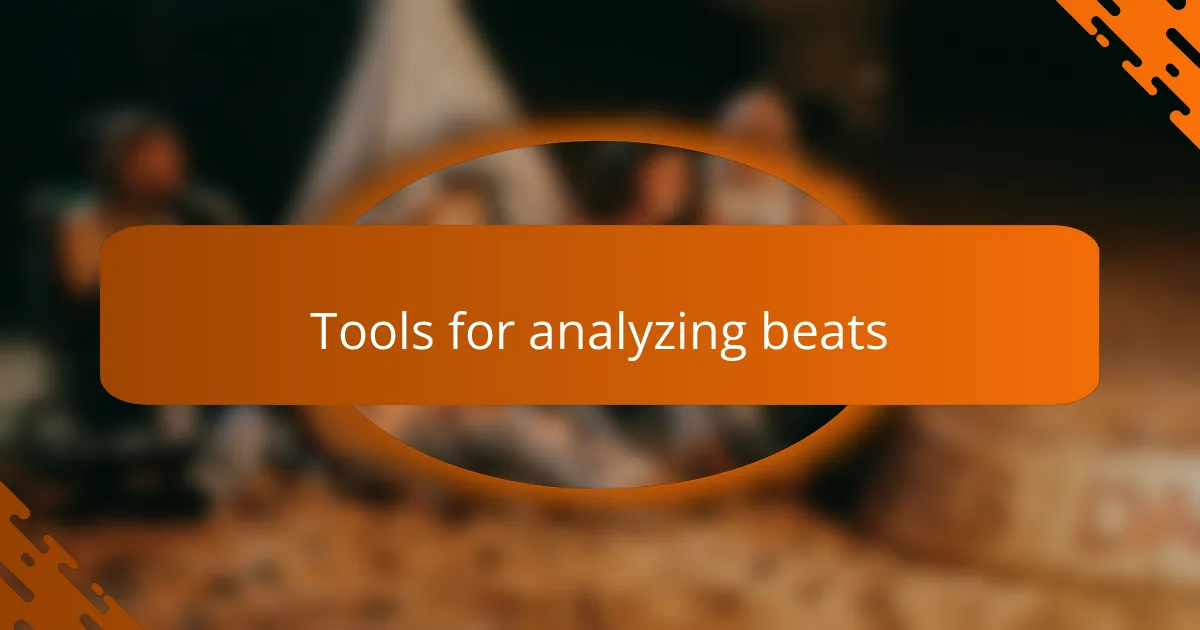
Tools for analyzing beats
When analyzing Drake’s beats, I found that the right tools can transform your understanding of music production. I often rely on software like Ableton Live and FL Studio, which not only allow for in-depth exploration of rhythm and tempo but also provide a hands-on approach to dissecting and recreating beats. The thrill of isolating an interesting sound or sample and digging into its layers is a fulfilling experience that gives me a deeper appreciation of the artistry behind Drake’s tracks.
Over the years, I’ve also discovered a few essential tools to enhance my beat analysis journey:
- Digital Audio Workstations (DAWs): Ableton Live, FL Studio, and Logic Pro
- Audio Analyzers: iZotope Ozone, T-RackS
- Sample Libraries: Splice, Loopmasters
- Visualizers: Sonic Visualiser, Adobe Audition
- Music Theory Apps: Hooktheory, Musition
Having these resources at my fingertips not only aids in dissection but also inspires my creative process.
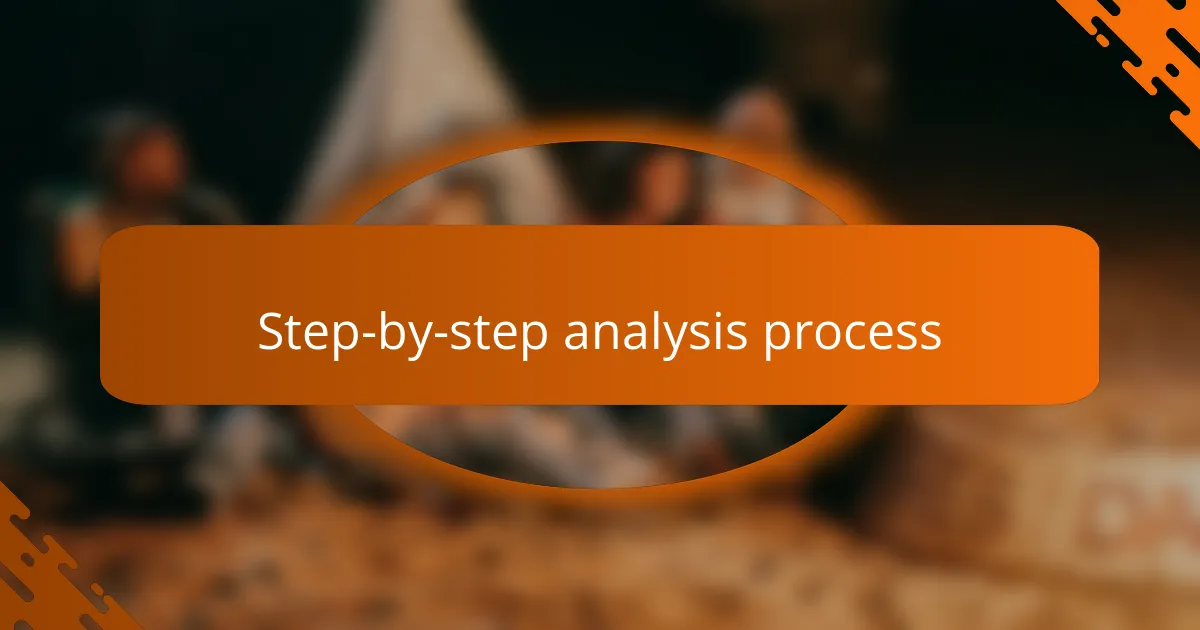
Step-by-step analysis process
When I set out to analyze Drake’s beats, I followed a clear step-by-step process that allowed me to dig deep into his musical style. First, I listened to the track multiple times, focusing on the instrumentation and emotional tone. I remember getting lost in “Passionfruit,” feeling the vibrant rhythms that made it stand out.
Next, I broke down the elements of each beat, such as the bassline, melody, and use of samples. I found that Drake often mixes genres, which gives his music a unique flair. For instance, I noticed how the ambient sounds in “Hold On, We’re Going Home” create an immersive atmosphere that pulls listeners in.
Finally, I compared different tracks to spot trends in his production techniques and lyrical themes. Understanding his evolution as an artist helped me appreciate his work on a deeper level. By analyzing each component, I started to see why Drake’s beats resonate with so many people.
| Aspect | Observation |
|---|---|
| Instrumentation | Rich layers with electronic influences |
| Emotional Tone | Melancholic yet hopeful |
| Genre Mixing | Blends hip-hop, R&B, and dance |
| Production Techniques | Use of ambient sounds and catchy hooks |
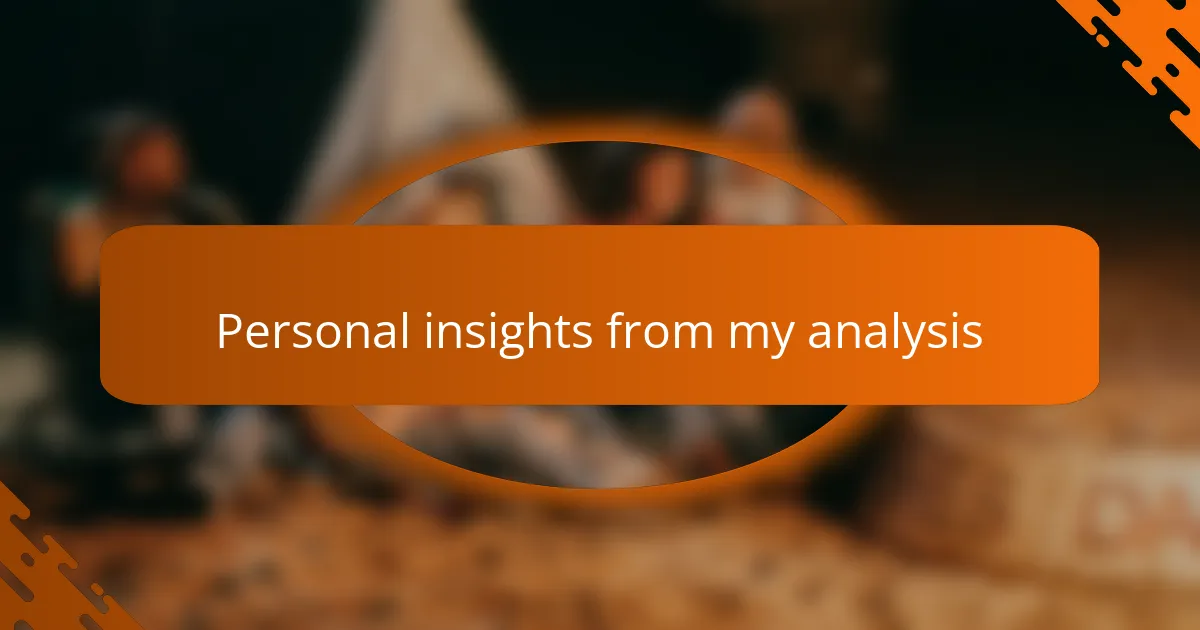
Personal insights from my analysis
When delving into Drake’s beats, I often find myself caught up in the layers of emotion he effortlessly weaves into his music. For instance, while analyzing “Marvins Room,” I was struck by how the haunting instrumentation and the subtle use of vocal samples create a vulnerable atmosphere. It reminded me of those quiet moments of introspection I’ve experienced, where the music echoes the complexities of love and heartache.
In my analysis, I noticed several key elements that contribute to the distinct feel of Drake’s tracks:
- Melodic Hooks: They grab your attention, drawing you into the emotional essence of the song.
- Diverse Instrumentation: The use of unexpected sounds keeps the listener engaged and curious.
- Lyricism: Personal and relatable themes resonate deeply, making his messages impactful.
- Rhythmic Variety: His ability to shift tempos adds dynamism, reflecting the unpredictability of his narratives.
- Layered Production: Each beat often has multiple sonic elements, creating a rich tapestry of sound that encourages repeated listens.
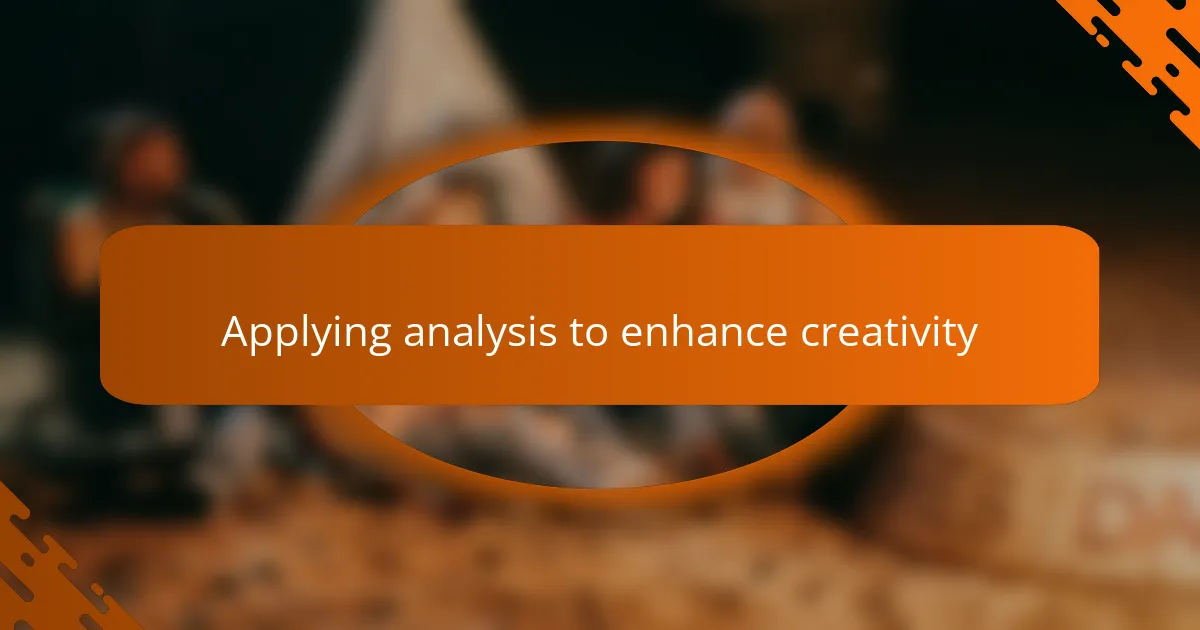
Applying analysis to enhance creativity
When I analyze Drake’s beats, I often discover intricate layers that inspire my own creative process. For instance, his use of melody often blends seamlessly with rhythm, inviting listeners to feel a range of emotions — something I strive to incorporate into my own work as a musician. I’ve found that breaking down the structure of a beat can lead to surprising revelations about how I can enrich my own compositions.
By delving into the nuances of his music, I’ve learned to experiment with elements such as tempo, dynamics, and instrument layering. This exploration opens new pathways for my creativity, allowing me to push boundaries in my own style. Here’s how I apply this analytical framework to enhance my creativity:
- Listen Actively: Focus on different layers of the beat to identify unique elements.
- Experiment with Variations: Create my own versions of Drake’s beats, tweaking melodies and rhythms.
- Emotional Connection: Consider how specific beats evoke feelings and how I can achieve similar effects in my music.
- Collaborative Learning: Engage with fellow musicians about their interpretations of Drake’s style to gain new perspectives.
- Record and Reflect: Keep a journal of my findings and emotional responses to different beats to fuel my creativity.
Through this methodical yet personal approach, I am not just learning; I am growing as an artist.